(K. Strauss, J. Blank, K. Spiegel) The Use of Acupuncture in the Treatment of Drug-Related Diseases (K. Strauss, J. Blank) Historical Background Acupuncture treatment for addiction dates back to the early 1970’s. In 1972 a neurosurgeon in Hong Kong, Dr. H.L. Wen, discovered that opium with drawal symptoms in a patient had subsided with an ear acupuncture protocol for anesthesia. In the United States, Dr. Michael O. Smith and his colleagues, working in the Division of Substance Abuse at Lincoln Hospital, New York, expanded on Dr. Wen’s work, and by 1975 had developed what has become known as the NADA 5-point auricular detox protocol (sympathetic, shen men, Kidney, Liver, and Heart/Lung). At that time in the United States, methadone was beginning to be used as a treatment for heroin addiction. Methadone can be taken orally and, due to its considerably longer half-life, once per day dosing is possible. Thus, the complications of i.v. consumption are avoided, making possible an easily administered substitute for heroin. The aim of this substitution is to reduce drug-trafficking crime and to enable addicts to remain fit for work. This method may be useful for some addicts, but it has its drawbacks. Methadone programs are plagued with the problem of “cross-addiction” in addition to methadone, addicts seek out other drugs, such as alcohol, methamphetamine, marijuana, cocaine, and crack (a cocaine derivative). In the 1980’s, Judge Herbert Klein in Miami was given the task of seeking more meaningful ways to give Florida’s many crack addicts appropriate treatment. He sought a way for drug addicts to be able to withdraw from opiates as well as cocaine and to reduce their propensity to aggression during the consumption phase if possible. Cocaine has a destructive effect on the psyche. Its aftereffects— psychotic-like episodes—can persist for years and appear completely unexpectedly. There is no substitute for cocaine (as methadone is a substitute for heroin). This was the situation when Michael Smith and Judge Klein met. At the time, Smith was running the outpatient department for drug addicts at Lincoln Hospital in New York. He had been working there for years in a program based on the NADA 5point auricular protocol. The success of the acupuncture-based program at Lincoln convinced Judge Klein. Projects supported by the judicial system were started in Florida, as well as several other states, with considerable success. In 1996, approximately 250 drug addicts a day were treated on an outpatient basis at Lincoln Hospital in New York (chiefly) with auricular acupuncture. The success of this program (i.e. among other things reduced aggression and extension of clean times) was significantly greater than that of other drug withdrawal programs not only in New York but also in other parts of the United States. However, acupuncture treatment of drug addicts in that country would probably still be eking out its previous wallflower existence today were it not for another—sometimes more important—aspect besides patient success: it is cheaper than other therapies. Nevertheless, astonishingly this form of treatment has only slowly found its way to Europe. Advantages of Acupuncture for the Treatment of Addiction That is, acupuncture is equally effective for many if not most drug problems. With the complex pattern of polysubstance addictions we see so frequently— from heroin to speed, cocaine, “speedballs” (a mixture of cocaine and heroin), marijuana, “designer” drugs such as LSD and ecstasy, and of course, alcohol—this advantage should not be underestimated. This is precisely what addiction therapists have always wanted, namely a way to reduce the cravings addicts feel and which drive them to relapse time and time again. It is always fascinating to observe how quickly and efficiently patients receiving acupuncture are able to admit, accept, and—this is one of our main objectives—play an active part in obtaining other offers of help, such as counseling, group sessions, and 12-step programs. This effect should be of interest above all to funding sources for treatment programs: the author’s experience shows that inpatient withdrawal from addictive drugs is generally reduced by approximately one third if acupuncture is used comprehensively, i.e. if the use of medications is largely avoided. The decisive factor here is that the patient experiences the withdrawal process as considerably easier. Practitioners know that much inpatient treatment today could be done as or more effectively on an outpatient basis—and at much lower cost. One of the main problems for addiction treatment is the pressure caused by cravings. It is precisely here that acupuncture can be exceptionally helpful, thus making outpatient intervention a sensible option in many cases, not only in the post-with drawal period when interventions to prevent relapse are important, but also during withdrawal itself on an outpatient basis. The use of cocaine, crack, and speed has grown rapidly. Increased aggressive behavior on the part of these drug users has also grown and, not surprisingly, it is a typical symptom of withdrawal from these drugs. Acupuncture is a remarkably effective way of reducing this type of behavior. In addition, acupuncture is useful for the following purposes: To sum up, acupuncture profitably combines the advantages of other treatment methods with previously unavailable intervention options, while providing almost complete freedom from side effects. It should be noted that acupuncture for addiction is not always effective and sometimes its effects are not consistent from patient to patient. It has its failure rate, although this is astonishingly low; it has its side effects, although these are minimal. And it is not wise to rely on acupuncture alone: It cannot replace the capable therapist, a good support group, and other treatment modalities. But it can ease things considerably for the patient and thus can be an extremely useful tool in the treatment arsenal. The Points The points listed below can be needled at every session regardless of the setting (outpatient/inpatient/visiting):
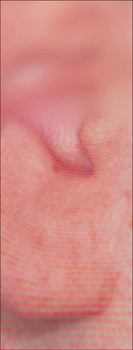
5 The Medical Treatment
of Addiction Using Acupuncture
 Acupuncture for addictions is nonspecific in its action
Acupuncture for addictions is nonspecific in its action
 Acupuncture reduces cravings for the drugs of addiction
Acupuncture reduces cravings for the drugs of addiction
 Acupuncture treatment opens the way for further interventions
Acupuncture treatment opens the way for further interventions
 Acupuncture can significantly reduce the time needed for withdrawal
Acupuncture can significantly reduce the time needed for withdrawal
 Acupuncture makes treatment on an outpatient basis possible to a large degree
Acupuncture makes treatment on an outpatient basis possible to a large degree
 Acupuncture for addiction reduces aggressive tendencies
Acupuncture for addiction reduces aggressive tendencies
 Convulsion prophylaxis
Convulsion prophylaxis
 Intervention in acute convulsions
Intervention in acute convulsions
 Pain relief
Pain relief
 Balancing the autonomous nervous system
Balancing the autonomous nervous system
 Regulation of depressive moods
Regulation of depressive moods
 Reduction of internal agitation (anxiety)
Reduction of internal agitation (anxiety)
 Reduction of sleep disorders
Reduction of sleep disorders
 Improvement of the immune system
Improvement of the immune system
 Reduction of additional pharmacological intervention.
Reduction of additional pharmacological intervention.
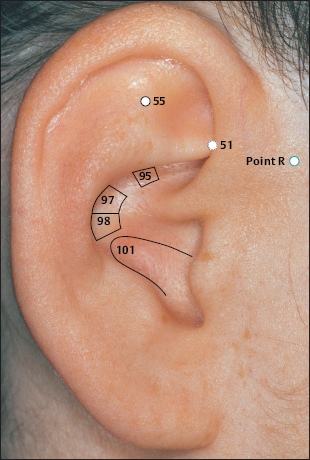
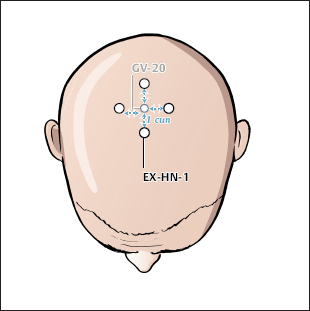 | 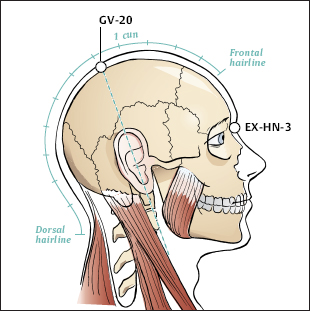 |
The aforementioned points are also used b they NADA (National Acupuncture Detoxification Association). The latter two points should not be needled simultaneously but alternatively. If more than one acupuncture session a day is necessary, possibly as part of inpatient treatment for withdrawal, the Psychotherapy Point according to Bourddiol is preferably needled in the morning/at midday and EX-HN-1 in the afternoon or evening.
Contrary to the rule of only needling active points on the ear, in addiction treatment all auricular points should be needled. In patients with low energy levels—which generally speaking includes any person undergoing withdrawal from addictive drugs (both from the Western scientific as well as the traditional Chinese viewpoint)—finding “active” points may be difficult, because any point may be perceived as ah shi by the patient. Thus, all ear points should be needled, whether they test positively or not as “active” points.
The reader should note that numbering as well as location of auricular points may differ greatly depending on the school.
For the Liver Point we use the Chinese location in Zone 97.
We always locate the Vegetative System Point deep in the helical groove, at the junction between the inferior antihelical crus and the helix. This point is difficult to needle (we have developed a little trick for doing so even without seeing the point, with a 99% success rate). We locate the Psychotherapy Point according to Bourdiol in the extension of the ascending branch of the helix (and this is the crucial part) in a fossa at the transition to the skin of the face. We have found that this fossa can almost always be felt in the height (level) of the inferior antihelical crux.
Needles should be left in the ear for 45 minutes and in the body for 30 minutes.
As a rule, needling of these basic points leads to such desired effects as reduced cravings for drugs, reduced stress, and general calming of the patient. If time permits, apart from basic acupuncture for addictions, acupressure for addiction (GB-20 for three to four minutes) and the use of body points as needed for specific symptoms can be included.
Acupressure
The effects of addiction acupressure will be illustrated on the basis of GB-20.
Preliminary Remarks
- One of the chief aspects of the addict’s pathology is intrapersonal alienation, the person’s loss of contact with themselves. This always results in interpersonal alienation to a greater or lesser degree, i.e. disruption of social contact, generally quite apparent.
As Michael Smith says, your addict may have stolen his mother’s last $20 for a fix—but “the qi doesn’t care,” it just treats the addict as a person out of balance, and creates new balance.
- Addicts are ambivalent in many ways. For example, many of them would like to be in touch with their surroundings and with other people, but at the same time are afraid of this contact. Not least, they would like to be in touch with themselves, to be aware of themselves, but at the same time they are afraid of what that awareness might bring.
In various situations and phases of recovery addicts therefore tend to lose touch with themselves and others; they want to get away—from the hospital, from therapy, from the current situation— at the end of the day, from contact.
In such a situation, acupressure of GB-20 for as short a time as possible very often makes it possible to maintain, strengthen, or restore contact with the patient. It is an amazingly simple and highly effective intervention which can, if required but not necessarily, be supplemented verbally.
Furthermore, all the other indications of the GB20 point naturally also apply to acupressure for addiction. Several indications can, therefore, often be covered by one point.
Additional Acupuncture Protocols
List of Indications
The following list of protocols was drawn up in an inpatient setting and has since proved valuable in outpatient settings as well. The points and point combinations are needled in addition to the aforementioned basic points. Naturally, the principle of using as few needles as possible applies here too; thus it may make sense to use different points in different sessions. Experience has shown that in an inpatient setting patients tolerate up to three sessions a day if they can understand the need for so many treatments. The frequency of treatments should be reduced as soon as possible.
Standard Values
If withdrawal symptoms are acute, usually two sessions a day for two to three days are required; thereafter, one session a day for approximately two days, then extension (e.g. every two to three days or longer) depending on the symptoms. More than a maximum of 20–25 sessions is seldom necessary even in the case of polysubstance withdrawals.
In the event of an impending relapse during early recovery—a situation commonly seen in outpatient settings—there are some important indications for the most favorable time to start needling. Usually, but not always, the basic addictions protocol together with the use of acupressure is sufficiently effective to prevent relapse. If not, HT-9 or KI-3 should be chosen, depending on the patient’s initial state of mind (see discussions of HT-9 and KI-3 below).
Indications
Convulsions, Acute
GV-26 (du mai 26)
In the case of alcohol dependency, convulsions can occur both during withdrawal as well as in the consumption phase. In the case of i.v. drug addicts, as a rule convulsions may occur during withdrawal, depending on what other substances the addict may be using at the same time. In my experience, the use of du mai 26 is preferable to other measures (not in the case of status epilepticus, however!) for several reasons:
- Du mai 26 can be easily and quickly located;
- Du mai 26 does not necessarily require needling—strong acupressure with a fingernail or the tip of a ballpoint pen is often sufficient to alleviate the convulsions;
- Manipulation of du mai 26 usually ends the convulsion within 15–20 seconds;
- The postictal phase is usually between two to four hours. If the patient’s convulsions are interrupted using du mai 26, the postictal phase is seldom longer than one hour.
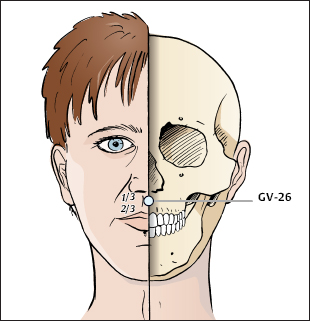
Convulsion Prophylaxis
LI-3/BL-62/GB-34 (in combination)
I.v. drug addicts often use barbiturates and benzodiazepines at the same time, which may cause withdrawal-induced convulsions even at relatively low doses. Therefore, withdrawal from multiple substances is rarely attempted today without access to tried and tested antiepileptic drugs.
In practice, needling the aforementioned point combinations has proved to reduce significantly the frequency of withdrawal-induced convulsions. Although approximately 20% of the patients admitted were known to have had convulsions during withdrawal, with this treatment convulsions occurred on a scale of 0.6–1.5%, given the same pattern of drug use that led to the seizures.
NOTE Needling should always be supported by a high dose of oral magnesium.
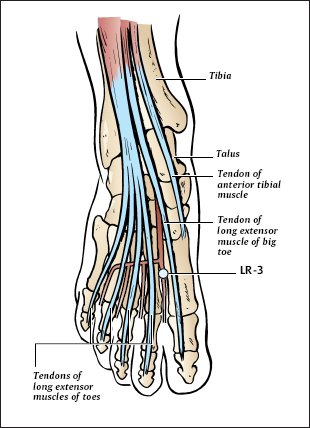
Diarrhea
ST-25/ST-36 (in combination or separately)
Diarrhea is one of the most common symptoms of withdrawal. With acupuncture, both the duration of the diarrhea phase and the frequency of loose stools can be reduced. This is important from the perspective of electrolyte balance. Moxibustion of ST-36 should always be considered as well.
Nausea/Vomiting
CV-12, PC-6
The gastrointestinal tract is extremely sensitive during withdrawal. Nausea, which is very unpleasant subjectively and is often associated with severe stomach pain, can in many cases be alleviated by acupuncture. In cases of stubborn persistence, however, one should not be afraid to use the tried and tested drug metoclopramide. With needling at the same time, doses can be kept low.
NOTE Care should be taken with the location of CV-12: It is in the middle of the line connecting the xiphoid base (not xiphoid apex) with the navel.
Menstrual Complaints
CV-4, SP-6, ST-36, LR-3
The majority of female users of addictive drugs develop secondary amenorrhea. During withdrawal or after a short period of being clean, menstruation often starts again, but painfully and haltingly. Moxibustion or needling of CV-4 is in many cases sufficient to solve this problem.
Inner Agitation
HT-7, HT-9
The feeling of inner agitation, of “being driven,” occurs not only during the withdrawal phase, but also during early recovery. It may be associated with drug cravings to a greater or lesser extent. In my experience, needling HT-9 is less painful than one would think from its location.
Insomnia
HT-7, EX-HN-1, GV-20, an mian
EX-HN-1 is already included in the basic protocol. If necessary, needling other points, in particular HT-7, can be supportive. As a rule, acupuncture is more effective than drugs.
Depressive Moods
KI-3, KI-7, CV-6 (moxa), ST-36 (moxa), GB-20 (acupressure)
Depressive moods are part of the clinical picture of addiction. Acupuncture and moxa are highly suitable for handling these moods without drugs. Sensitivity is required during those stages in which depression is associated with an acute risk of relapse; tonifying needling techniques or moxa may in certain circumstances provide the energetic potential for a relapse.
According to my observations, moxibustion of CV-6 can often have a (momentary) indicator function: if the point is still pale and cool at the beginning of the session despite prior warming and reddening of the surrounding area of skin, quite often it becomes warm and red if the patient states that he/she thinks that the treatment appears adequate for the time being.
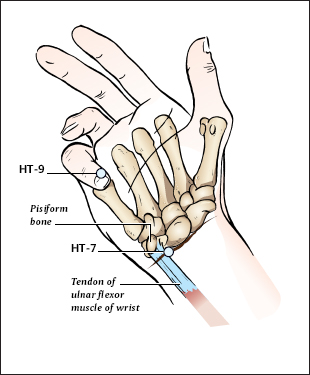
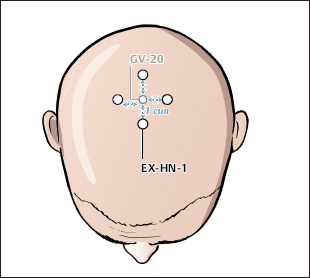

Stomach Complaints
CV-12, ST-25
Alcoholics, nicotine addicts, and people with stress-related illnesses often have stomach complaints. Of course, heroin and cocaine addicts are not spared either. The use of acupuncture makes the usual dispensing of antacids the rare exception. Patients are not always willing to accept that they will not be medicated without further ado, many having already internalized the ritual of reaching for stomach medications.
Night Sweats
KI-3, KI-6, SP-6, SP-10
Intense night sweats are frequently a part of withdrawal symptoms. Quite often patients are forced to change their nightclothes and bed linen several times a night. Just one acupuncture treatment can be beneficial here, both in terms of alleviating the sweats and improving the electrolyte balance.
Back Pain
EX-B-8, BL-23, Hand Point 1, GV-26 (du mai 26)
EX-B-8 can be used in acupressure, it can be needled and moxa’d. Its particular efficacy never ceases to amaze me. At the same time BL-23 can also be needled (as well as moxa’d!) because of its other favorable effects on addicts’ pathologies. In addition to EX-B-8, Hand Point 1 can be treated in the case of acute conditions. Acupressure to du mai 26 can favorably affect lumbago.
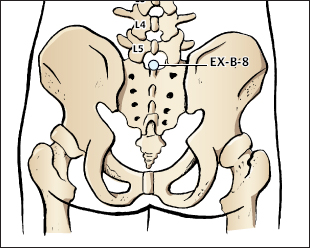
Headaches
GB-20, BL-10, ST-8, GB-14, LI-4
Headaches are an extremely complex topic. Apart from all other possible types, addicts tend to have headaches along the Gallbladder Channel. Simple acupressure to GB-20 alone often affords considerable relief. Should analgesic drugs be necessary, however, the dose can be reduced considerably if acupuncture is used at the same time.
Leg Pain
ST-44, KI-3, trigger points
Leg pain primarily occurs as part of withdrawal treatment. It often occurs in heroin addicts. Patients describe a partially dragging, partially burning, stabbing pain deep in the lower leg. Painful symptoms can quickly be improved using the aforementioned point combination. Often patients are free of pain after the treatment.
Searching for trigger points in the region of the tibialus anterior muscle has proved worthwhile. If these are found, they should be needled regularly at the same time. Thereafter, efficiency compared with needling only ST-44 and KI-3 is significantly increased.
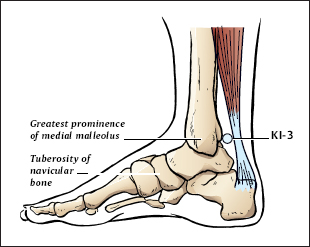
Squinting
EX-HN-5, ST-2
Withdrawal-related squinting is a relatively little known phenomenon. It occurs very seldom but is all the more persistent when it does. Because the strain of squinting is burdensome and can also give rise to further complications (vertigo, nausea, uncertain gait), the usual treatment consists of an eye patch, which must be worn for up to six weeks in some cases. This treatment is unnecessary because needling of M-HN-5 tuo guan ming (insert the needle subcutaneously approximately 1 cm in the direction of the Psychotherapy Point according to Bourdiol) can achieve stable results after only three to five treatments. ST-2 can also be used to provide support.

Spastic Bronchitis, Asthmatic Complaints
CV-17, LU-9, LU-7
Nicotine, alcohol, heroin, cocaine, benzodiazepines, hashish—there is scarcely an addiction which is not accompanied by complications of the lungs. This is equally true of outpatients and inpatients. Usually chronic complaints with a permanent spastic component are involved. Needling (in particular CV-17) is often capable of achieving a clearly discernible, immediate effect and partly reduces the need for bronchodilators. This immediate experience of relief boosts builds the patient’s confidence in acupuncture to a degree that should not be underestimated.
NOTE CV-17 must be needled with great care. Approximately 4% of people have a foramen in the sternum in the vicinity of CV-17. Needling through that foramen can cut the pericardium, causing serious damage or death.
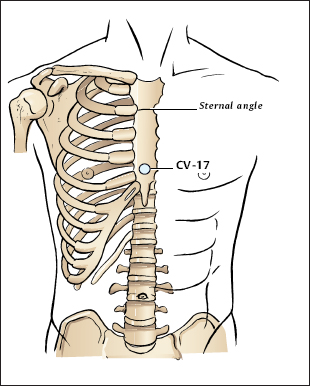

Summary
More and more doctors in hospitals and clinics are starting to use acupuncture as the sole or adjunct form of treatment for addictions. They have seen that this modality renders exceptionally useful services both in withdrawal and thereafter in the various stages of recovery. They have learned to appreciate its nonspecificity, which permits universal application. They know about its practicability and excellent cost–benefit ratio.
Acupuncture for Nicotine Dependence, Obesity and Alcohol Dependence
(K. Spiegel)
Acupuncture for Nicotine Dependence
Origin of Nicotine Dependence According to Traditional Chinese Viewpoints
Regular abuse of nicotine can lead to regulatory disturbances of the Heart Channel and the Pericardium Channel. The consequences of this in the event of nicotine deficiency are false regulations of the circulatory system with palpitations, tachycardia, and sweating. Certain brain functions, such as consciousness, thoughts and feelings, are attributed to the heart functional circle according to traditional Chinese ideas. The points of the Heart Channel have a strong psychic effect.
Nicotine abuse can lead to weakness of the lung qi. The patient complains of coughing, shortness of breath upon slight exertion, weak defenses with a propensity to infection. The patient’s tongue is pale and tender with a thin, white coating.
Body Acupuncture
Treatment of nicotine addiction therefore initially consists of strengthening of the yin, in particular of the Heart Channel and the Pericardium Channel.
Tonifying body acupuncture then takes place via the following points:
 LI-20: relaxation, strengthening of shen.
LI-20: relaxation, strengthening of shen.
 HT-7: Yuan point, cooling of heart fire and heart heat.
HT-7: Yuan point, cooling of heart fire and heart heat.
 PE-6: Luo point, regulation of qi, cooling of heat.
PE-6: Luo point, regulation of qi, cooling of heat.
 GV-14: calming of shen, elimination of heat.
GV-14: calming of shen, elimination of heat.
The following points may be needled to tonify lung qi weakness:
 LU-9: yuan point of the lung, promotes lung qi, regulates the circulation of lung qi, alleviates cough, removes phlegm.
LU-9: yuan point of the lung, promotes lung qi, regulates the circulation of lung qi, alleviates cough, removes phlegm.
 LU-1: mu point of the lung, expels heat and phlegm.
LU-1: mu point of the lung, expels heat and phlegm.
 BL-13: shu point of the lung, regulates and strengthens lung qi, expels phlegm.
BL-13: shu point of the lung, regulates and strengthens lung qi, expels phlegm.
 LI-11: regulates blood and lung qi, removes heat, modulates immune system.
LI-11: regulates blood and lung qi, removes heat, modulates immune system.
 CV-17: master point of the respiratory tract, mu point of the pericardium, regulates circulation of qi in the upper warmer, strengthens breath qi (zong qi), opens the thorax, expels phlegm.
CV-17: master point of the respiratory tract, mu point of the pericardium, regulates circulation of qi in the upper warmer, strengthens breath qi (zong qi), opens the thorax, expels phlegm.
Auricular Acupuncture
Auricular acupuncture can be used as an alternative treatment or in combination with body acupuncture. Treatment when giving up smoking is usually via a combination of three points. These form the corners of roughly isosceles triangles, for example, Antiaggression Point, Frustration Point, Craving Point or Antiaggression Point, Lung Point, Craving Point.
A proven treatment method is the needling of the following auricular points (Chinese nomenclature):
 51 Vegetative Point: at the intersection of the inferior anthelical crus and the helix.
51 Vegetative Point: at the intersection of the inferior anthelical crus and the helix.
 55 Shen men: in the angle formed by the superior and inferior anthelical crura, more toward the superior anthelical crus.
55 Shen men: in the angle formed by the superior and inferior anthelical crura, more toward the superior anthelical crus.
 100 Heart Zone: in the middle of the inferior concha.
100 Heart Zone: in the middle of the inferior concha.
 101 Lung Zone: located around zone 100.
101 Lung Zone: located around zone 100.
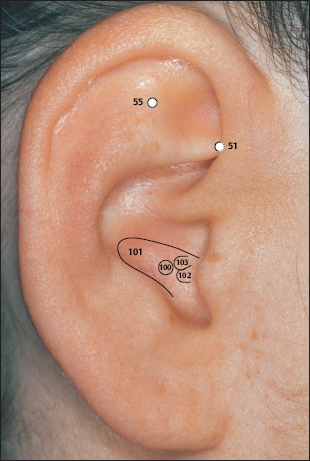

 102 Bronchial Zone: medial to the Lung Zone toward the external meatus acusticus.
102 Bronchial Zone: medial to the Lung Zone toward the external meatus acusticus.
 103 Trachea Zone: above zone 102.
103 Trachea Zone: above zone 102.
According to Nogier, the following auricular points can be included in the treatment plan:
 Antiaggression Point: at the lower edge of the intertragic notch, toward the face.
Antiaggression Point: at the lower edge of the intertragic notch, toward the face.
 Craving Point: at the end of the postantitragal fossa, at the intersection with the helix.
Craving Point: at the end of the postantitragal fossa, at the intersection with the helix.
 Larynx/Pharynx Point: upper part of the supra-tragic notch.
Larynx/Pharynx Point: upper part of the supra-tragic notch.
 Occiput Point: in the postantitragal fossa, roughly midway between points 29a and 29b.
Occiput Point: in the postantitragal fossa, roughly midway between points 29a and 29b.
 Frustration Point: in the furrow between the tragus and helical crus.
Frustration Point: in the furrow between the tragus and helical crus.
When needling, the most sensitive points are selected each time.
As a rule, treatment takes place every two days in the first week, thereafter once or twice a week depending on requirements, with each treatment lasting 30 minutes.
Treatment usually lasts three to four weeks. Each patient must be individually examined and temporary eating disorders, for example, must be included in the treatment plan.
Acupuncture for Obesity
Origin of Obesity According to Traditional Chinese Viewpoints
Obesity should be understood as a multifactorial false regulation of the body, in which both heredirtary and genetic factors as well as endocrinological, psychological, and social causes play a role.
Overweight resulting from an increased craving for food responds significantly better to addiction treatment with acupuncture than overweight for hormonal reasons.
According to traditional Chinese viewpoints, weaknesses of individual organ systems, in particular, the Spleen Channel, result in excessive hunger. Weakness of the spleen qi can also present as exhaustion, fatigue, weakness, and digestive disorders with bloating and swelling of the extremities.
The patient’s tongue is pale with a thin, white coating and reveals tooth imprints on the edge of the tongue.
By increasing body tissue, yin is strengthened; yin obesity represents protection against weight loss and ego reduction.
Body Acupuncture
Treatment of obesity therefore initially consists of strengthening of yin, in particular of the Spleen Channel. Moxibustion of the point SP-6 is often recommendable at the start of treatment.
Tonifying body acupuncture then takes place via the following points:
 GV-20: relaxation, calming of the shen.
GV-20: relaxation, calming of the shen.
 SP-6: tonifies the spleen functional circle, eliminates qi stagnation, crossing point of the lower three yin channels.
SP-6: tonifies the spleen functional circle, eliminates qi stagnation, crossing point of the lower three yin channels.
 ST-36: general tonification, strengthens stomach, spleen, and food qi (gu qi), stabilizes the mind (shen) and emotions.
ST-36: general tonification, strengthens stomach, spleen, and food qi (gu qi), stabilizes the mind (shen) and emotions.
Possible supplementary points are:
 LR-13: master point of the zang organs, mu point of the Spleen Channel, removes stagnation of food.
LR-13: master point of the zang organs, mu point of the Spleen Channel, removes stagnation of food.
 BL-20: shu point of the Spleen Channel.
BL-20: shu point of the Spleen Channel.
 SP-3: yuan point, strengthening of the spleen qi.
SP-3: yuan point, strengthening of the spleen qi.
 CV-12: mu point of the stomach, master point of the fu organs, strengthens the spleen and stomach.
CV-12: mu point of the stomach, master point of the fu organs, strengthens the spleen and stomach.
 HT-7: yuan point of the heart, strengthens the circulation and the psyche, regulates in the event of insufficiency of blood as a result of spleen qi weakness.
HT-7: yuan point of the heart, strengthens the circulation and the psyche, regulates in the event of insufficiency of blood as a result of spleen qi weakness.
 PE-6: luo point of the pericardium, regulates the circulation of qi, regulates the middle burner.
PE-6: luo point of the pericardium, regulates the circulation of qi, regulates the middle burner.
Auricular Acupuncture
Auricular acupuncture may be used as an alternative treatment or in combination with body acupuncture. Mukaino (1981, 1982) showed that there are special points on the ear that reduce appetite. Stimulation of these points resulted in a reduction of the insulin level with an empty stomach and an increase in gastrin secretion.
Auricular acupuncture can both reduce the sensation of hunger and eliminate contractions of the stomach due to hunger (Poentinen, 1995).
A proven treatment method is the needling of the following auricular points (Chinese nomenclature):
 87 Stomach Zone: around the ascending helix branch.
87 Stomach Zone: around the ascending helix branch.
 18 Hunger Point: in the middle between points 13 and 14 on the tragus.
18 Hunger Point: in the middle between points 13 and 14 on the tragus.
 17 Thirst Point: in the middle between points 12 and 14 on the tragus.
17 Thirst Point: in the middle between points 12 and 14 on the tragus.
 51 Vegetative Point: at the intersection of the inferior anthelical crus and the helix.
51 Vegetative Point: at the intersection of the inferior anthelical crus and the helix.
 55 Shen men: in the angle formed by the superior and inferior anthelical crura, more toward the superior anthelical crus.
55 Shen men: in the angle formed by the superior and inferior anthelical crura, more toward the superior anthelical crus.
According to Nogier, the following auricular points can be included in the treatment plan.
 29 Occiput Point: in the postantitragal fossa, roughly midway between points 29a and 29b.
29 Occiput Point: in the postantitragal fossa, roughly midway between points 29a and 29b.
 29b Jerome Point: in the postantitragal fossa, at the intersection with the Vegetative Groove.
29b Jerome Point: in the postantitragal fossa, at the intersection with the Vegetative Groove.
 Omega Point 1: in the superior hemiconcha, roughly midway between Point Zero and the intersection of the ascending helix and inferior anthelical crus.
Omega Point 1: in the superior hemiconcha, roughly midway between Point Zero and the intersection of the ascending helix and inferior anthelical crus.
 Zone of anxiety and worry: below the Antiaggression Point.
Zone of anxiety and worry: below the Antiaggression Point.
 Zone of sorrow and joy: on the occipital part of the lobule, at the same level as the zone of anxiety and worry.
Zone of sorrow and joy: on the occipital part of the lobule, at the same level as the zone of anxiety and worry.
 Antiaggression Point: at the lower edge of the intertragic notch, toward the face.
Antiaggression Point: at the lower edge of the intertragic notch, toward the face.
 Craving Point: at the end of the postantitragal fossa, at the intersection with the helix.
Craving Point: at the end of the postantitragal fossa, at the intersection with the helix.
 Food Craving Point: nerval stomach point in zone 2 of the anthelix, affiliated segment T1 to T3.
Food Craving Point: nerval stomach point in zone 2 of the anthelix, affiliated segment T1 to T3.
During needling the most sensitive points are selected each time. Active response zones should always be looked for in the Vegetative Groove.
Treatment takes place once or twice a week and each treatment lasts 30 minutes. It is a long-term treatment and must be geared to the individual.
Acupuncture In the Treatment of Alcohol Dependency
Symptoms of Alcohol Dependency According to Traditional Chinese Viewpoints
In chronically ill addicts there is usually a yin vacuity with a relative excess of yang. Patients are anxious and irritable, have night sweating and reddened palms of the hands and soles of the feet. Some have subfebrile temperatures and dryness of the mouth.
An additional kidney yin deficiency results in general weakness and lack of strength in the lower back and knee, in part in dizziness, tinnitus, and sexual weakness.
A liver yin deficiency is often accompanied by impaired vision, dryness of the eyes, rotatory vertigo, tinnitus, dysesthesia of the extremities, and tremor.
With a heart yin deficiency, the patient is often highly mentally excitable, has insomnia and palpitations.
A spleen qi weakness results in digestive disorders, edema, muscle weakness, and severe fatigue.
Body Acupuncture
Treatment of alcohol addiction therefore initially consists of strengthening yin, as well as, depending on the symptoms, the heart yin, the kidney yin, the liver yin, or the spleen qi.
Tonifying body acupuncture then takes place via the following points:
 SI-20: relaxation, strengthening of shen.
SI-20: relaxation, strengthening of shen.
 HT-7: yuan Point, cooling of heart fire and heart heat.
HT-7: yuan Point, cooling of heart fire and heart heat.
 PE-6: luo Point, regulation of qi, cooling of heat.
PE-6: luo Point, regulation of qi, cooling of heat.
 GV-14: calming of shen, elimination of heat.
GV-14: calming of shen, elimination of heat.
 KI-3: strengthening of kidney yin.
KI-3: strengthening of kidney yin.
 LR-8: strengthening of liver yin.
LR-8: strengthening of liver yin.
 SP-6: strengthening of spleen qi, crossing point of the lower three yin channels.
SP-6: strengthening of spleen qi, crossing point of the lower three yin channels.
Auricular Acupuncture
Auricular acupuncture may be used as an alternative treatment or in combination with body acupuncture. The following points according to Chinese nomenclature have proved their worth.
 51 Vegetative Point: at the intersection of the inferior anthelical crus and the helix. The point may also lie deep in the helical groove.
51 Vegetative Point: at the intersection of the inferior anthelical crus and the helix. The point may also lie deep in the helical groove.
 55 Shen men: in the angle formed by the superior and inferior anthelical crura, more toward the superior anthelical crus.
55 Shen men: in the angle formed by the superior and inferior anthelical crura, more toward the superior anthelical crus.
 97 Liver Zone: in the middle of the superior semiconcha.
97 Liver Zone: in the middle of the superior semiconcha.
 100 Heart Zone: in the middle of the inferior concha.
100 Heart Zone: in the middle of the inferior concha.
According to Nogier, the following auricular points can be included in the treatment plan.
 Antiaggression Point: at the lower edge of the intertragic notch, toward the face.
Antiaggression Point: at the lower edge of the intertragic notch, toward the face.
 29 Occiput Point: in the postantitragal fossa, roughly midway between points 29a and 29b. The Chinese localization of the Occiput Point is slightly more toward the face.
29 Occiput Point: in the postantitragal fossa, roughly midway between points 29a and 29b. The Chinese localization of the Occiput Point is slightly more toward the face.
 29c Craving Point: at the end of the postantitragal fossa, at the intersection with the helix.
29c Craving Point: at the end of the postantitragal fossa, at the intersection with the helix.
 Vegetative system II: on the inside of the antitragus, between points 26a (Pituitary Gland Point) and 30 (Parotid Gland Point).
Vegetative system II: on the inside of the antitragus, between points 26a (Pituitary Gland Point) and 30 (Parotid Gland Point).
 Frustration Point: in the furrow between the tragus and helical crus.
Frustration Point: in the furrow between the tragus and helical crus.
During needling the most sensitive points are selected each time.
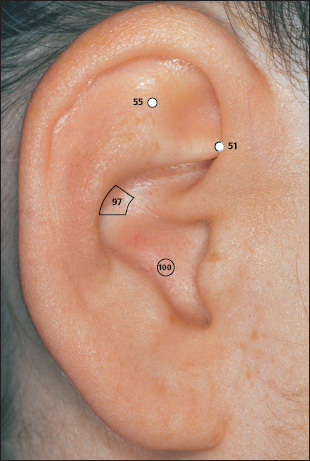
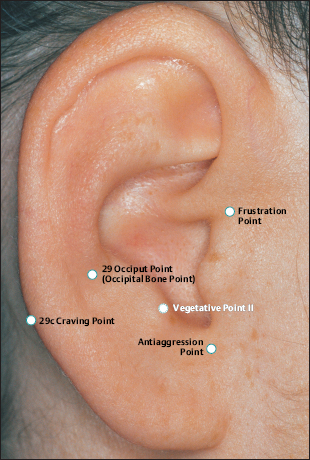
As a rule, treatment takes place daily in the first week, thereafter once or twice a week depending on requirements, with each treatment lasting 30 minutes.
Other Treatment Options
NADA (National Acupuncture Detoxification Association) recommends the following auricular point combination without going into detail about ways of finding the points:
 Main points: 51 Vegetative Point, 98 Liver Point, 55 shen men, 101 Lung Point, 95 Kidney Point.
Main points: 51 Vegetative Point, 98 Liver Point, 55 shen men, 101 Lung Point, 95 Kidney Point.
 Additional points: An additional four points should be selected from the following points according to sensitivity: 97 Spleen Point, 22 Endocrine Point, 29 Occiput Point, 34 Grey Substance Point, 84 Mouth Point, 87 Stomach Point.
Additional points: An additional four points should be selected from the following points according to sensitivity: 97 Spleen Point, 22 Endocrine Point, 29 Occiput Point, 34 Grey Substance Point, 84 Mouth Point, 87 Stomach Point.
Needling is carried out twice a day for 40 minutes each time over a period of four weeks; thereafter once or twice a week for three months.
Stay updated, free articles. Join our Telegram channel

Full access? Get Clinical Tree






